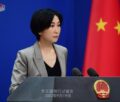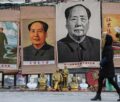Insisting “might is right”, China cares nothing for Taiwan’s people
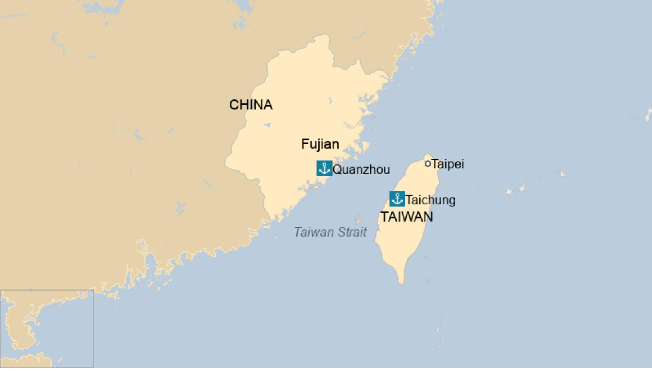

Beijing News Net Report
China’s antics after the Taiwan visit on August 3-4 by Speaker of the US House of Representatives Nancy Pelosi, demonstrated that the Chinese Communist Party (CCP) cares not at all for Taiwan and its people, but only for its own glory.
China feels it can threaten and bludgeon Taiwan at will, as the “Fourth Taiwan Strait Crisis” played out in early August. The People’s Liberation Army (PLA) – the armed wing of the CCP – flew aircraft menacingly towards Taiwan, forayed warships close to Taiwan’s territorial waters to blockade ports, and ballistic missiles angrily splashed down in waters around Taiwan.
The location of Chinese-imposed exclusion zones around Taiwan for military exercises reflected current PLA strategy, including rapid seizure of metropolitan areas in the north (especially Taipei), maritime blockades of ports like Kaohsiung and Keelung, capturing beachheads to enable large-scale landings, and controlling maritime strongpoints in the West Pacific to the east of Taiwan.
In the face of such brazen warmongering, how could Beijing think that Taiwan’s 23.5 million people would ever want to join China, a one-party state ruled by an authoritarian tyrant, where people have no freedom to express themselves or to vote?Indeed, the more China bullies its democratic neighbour, the more it drives Taiwan further away and hardens its resolve to resist. In fact, a recent survey revealed that just 2 per cent of Taiwan’s citizens now identify solely as Chinese. This is down from 25.5 per cent 30 years ago, showing a dramatic spurning of the party’s mantra that any ethnic Chinese person is the automatic property of communist China.
Conversely, in the past 30 years, the percentage identifying themselves as Taiwanese grew from 17.6 per cent to 63.7 per cent. As much as China blusters and threatens, the fact is that Taiwanese increasingly see themselves as separate from an ugly China.
Illustrating this hubris towards Taiwan, on 10 August the State Council released a new white paper titled “The Taiwan Question and China’s Reunification in the New Era”. In one part it stated: “We will work with the greatest sincerity and exert our utmost efforts to achieve peaceful reunification. But we will not renounce the use of force, and we reserve the option of taking all necessary measures. This is to guard against external interference and all separatist activities.”
It continued, “In no way does it target our fellow Chinese in Taiwan. Use of force would be the last resort taken under compelling circumstances. We will only be forced to take drastic measures to respond to the provocation of separatist elements or external forces should they ever cross our red lines … Our ultimate goal is to ensure the prospects of China’s peaceful reunification and advance this process.”One can see how bighearted the CCP is! But what is all this talk of “reunification”? Taiwan has never once been part of, or under the authority of, communist China.
The white paper is designed to burnish Chairman Xi Jinping’s domestic credentials ahead of the 14th National People’s Congress later this year, and it was probably moved forward to coincide with Pelosi’s visit.
In this policy paper, Beijing tries to drive a wedge between “secessionists” (read the Democratic Progressive Party of President Tsai Ing-wen) and the rest of Taiwan, even though she got 57.1 per cent of the vote in 2020 elections. China is also trying to drive a wedge between pro-Taiwan countries like the USA and those in the West, and others that do not wish to take any stance that would upset China.
Xi is given prominence in the white paper, and his Taiwan policy is outlined in five parts. Of course, he is credited with adding to the “theory on national reunification”. The document claims that reunifying Taiwan is the only way to prevent the country from being occupied by foreigners and to foil attempts by external forces to contain China. In other words, capturing Taiwan is about Chinese strategic interests such as breaking through the so-called First Island Chain.
Previous white papers said China would not send troops or administrative personnel to Taiwan, but such clauses have now been dropped. It confidently asserts: “Never before have we been so close to, confident in, and capable of achieving the goal of national rejuvenation. The same is true when it comes to our goal of complete national reunification.”Chinese diplomats have unabashedly discussed CCP plans for Taiwan after “reunification” (read that as “military conquest”). These plans entail re-education programs for the “effectively indoctrinated and intoxicated” Taiwanese public.
A recent cartoon in The Australian newspaper encapsulated the haughtiness of Chinese diplomats. Following an address at the National Press Club by Xiao Qian, China’s Ambassador to Australia, the cartoon showed a reporter asking the ambassador, “Once you’ve invaded and subdued the Taiwanese, what will they learn in your re-education camps?” The ambassador ironically replies, “That we mean them no harm.”
The “one country, two systems” policy China imposed on Hong Kong has been revealed as a fake promise, an agreement that can be reinterpreted or torn up at a moment’s notice. Hong Kong is now truly subjugated by the CCP, and Beijing’s similar unification blueprint for Taiwan is simply window dressing for a chilling ultimatum – accept our terms or else.
On 10 August, the PLA’s Eastern Theater Command confirmed the end of its joint exercises, claiming “all tasks [were] accomplished”. More worryingly, it said the PLA would “continue to carry out military training for war preparedness” and to “organize normalized combat readiness security patrols in the Taiwan Strait”.
In this way, China has promised that, in the future, the PLA will conduct regular drills on Taipei’s side of the Taiwan Strait. Just as it has done in the Spratly Islands, around the Japanese-owned Senkaku Islands and along the mountainous border with India, China has unilaterally altered the status quo.
On 28 July, well before Pelosi even left for Asia, a Chinese defence spokesperson had said there was “no such so-called Strait median line” and that the PLA did not recognize it. This was an escalatory move aimed at permanently challenging a norm that has existed for decades. It is another example of China rewriting norms and rules simply because it is stronger than others.
Worryingly, with these massive coordinated exercises, China has just set another precedent. Every time Beijing senses an insult, will it now blockade and bully Taiwan?The Third Taiwan Strait Crisis of 1995-96 saw both China and the USA posturing. After struggling to calibrate its response, the USA eventually sent a second carrier battle group into the area and China curtailed further missile firings. After that, China’s leaders resolved never to allow such humiliation to occur again. Now a very different China faces the USA, with the PLA well placed to do irreparable damage to American military assets in the region.
Perhaps other PLA theater commanders are chafing at the bit given that the Eastern Theater Command has been enjoying all the action. As another delegation of American politicians arrived in Taiwan on 14 August, the Eastern Theater Command has promised further “combat drills in the sea and air space around Taiwan”.
Perhaps, with a continuous stream of delegations, the USA can turn this into an asymmetric strategy to keep the PLA’s command at a perpetual state of alert, and to thus create exhaustion!Taiwan’s Foreign Minister Joseph Wu claimed, “China has used the drills in its military playbook to prepare for the invasion of Taiwan … China’s real intention behind these military exercises is to alter the status quo in the Taiwan Strait and the entire region.” He also warned that China’s ambitions extend far beyond Taiwan.
In its quest to dominate and subjugate Taiwan, Beijing cannot talk sense. Indeed, China deliberately conflates its one-China principle with the one-China policies of other countries. It does so willfully rather than in ignorance, demanding that every other country align with its principle. However, China stands alone, for even United Nations Resolution 2758 of 1971 makes no mention of Taiwan being part of the People’s Republic of China (PRC).
Despite all this, China continually distorts the meaning of everyone else’s one-China policies, and attempts to foist its own predilections upon them. Only China decrees that Taiwan is part of the PRC.
For example, China’s Ministry of Foreign Affairs recently tweeted, “The definition of the one-China principle is crystal clear, i.e. there is only one China in the world, Taiwan is part of China and the government of the PRC is the sole legal government representing the whole of China.” China claims more than 170 countries adhere to the one-China principle, but this is utter fantasy.
The Center for East Asia Policy Studies at Brookings issued a primer on America’s one-China policy.
Written by Richard Bush, the paper explained, “The one-China policy of the United States is not the same thing as the one-China principle of the PRC. The one-China policy contains more elements, such as the US interest in a peaceful process of cross-Strait dispute resolution, and its differing interpretation of Taiwan’s legal status as compared to Beijing’s interpretation.”In fact, the USA had a one-China policy from 1900-49 that was a response to the fragmentation of China into multiple power centres.
Bush noted: “Since 1949, the US one-China policy has addressed the existence of two rival governments: the PRC in Beijing and the Republic of China in Taipei. During the Cold War, Washington was forced to choose between the two governments, because each side rejected any idea that the United States could have diplomatic relations with both.”Washington maintained diplomatic relations with Taipei until the end of 1978, when it switched recognition to Beijing. However, at that time, the USA pledged to maintain unofficial relations with Taiwan.
Importantly, Bush explained: “The United States takes no position on the substance of a solution to the differences that divide Beijing and Taipei, whether it be the unification of Taiwan with China or any other scenario. But it does oppose either side unilaterally changing the status quo, and has consistently stated its ‘abiding interest’ in a peaceful resolution of cross-Strait differences. More recently, Washington has stated that any solution should have ‘the assent of the people of Taiwan’.”The high-and-mighty white paper promised the “historical and inevitable trend of reunification” because of the determination of 1.4 billion Chinese. In other words, because China is larger and more numerous, it can override the desires of the Taiwanese.
The same paper suggested the unification process should be sped up. Li Yihu, dean of Peking University’s Taiwan Research Institute, said, “The US is a paper tiger” on the question of Taiwan.
He added that, given China’s increasing national strength and military advantage at the Taiwan Strait, and as the island is not in its core interest, the US government will not sacrifice Americans for separatists in Taiwan.
It is easy to see that the egotistical CCP and its leader care not for the Taiwanese people at all, but only their long-cherished dream of ruling Taiwan###
-
Book Shelf
-
 Book Review
DESTINY OF A DYSFUNCTIONAL NUCLEAR STATE
Book Review
DESTINY OF A DYSFUNCTIONAL NUCLEAR STATE
- Book ReviewChina FO Presser Where is the fountainhead of jihad?
- Book ReviewNews Pak Syndrome bedevils Indo-Bangla ties
- Book Review Understanding Vedic Equality….: Book Review
- Book Review Buddhism Made Easy: Book Review
- Book ReviewNews Elegant Summary Of Krishnamurti’s teachings
- Book Review Review: Perspectives: The Timeless Way of Wisdom
- Book ReviewNews Rituals too a world of Rhythm
- Book Review Marx After Marxism
- Book Review John Updike’s Terrorist – a review
-
-
Recent Top Post
-
 NewsTop Story
What Would “Total Victory” Mean in Gaza?
NewsTop Story
What Would “Total Victory” Mean in Gaza?
-
 CommentariesTop Story
The Occupation of Territory in War
CommentariesTop Story
The Occupation of Territory in War
-
 CommentariesTop Story
Pakistan: Infighting in ruling elite intensifies following shock election result
CommentariesTop Story
Pakistan: Infighting in ruling elite intensifies following shock election result
-
 CommentariesTop Story
Proforma Polls in Pakistan Today
CommentariesTop Story
Proforma Polls in Pakistan Today
-
 CommentariesTop Story
Global South Dithering Away from BRI
CommentariesTop Story
Global South Dithering Away from BRI
-
 News
Meherabad beckons….
News
Meherabad beckons….
-
 CommentariesTop Story
Hong Kong court liquidates failed Chinese property giant
CommentariesTop Story
Hong Kong court liquidates failed Chinese property giant
-
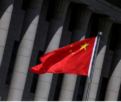 CommentariesTop Story
China’s stock market fall sounds alarm bells
CommentariesTop Story
China’s stock market fall sounds alarm bells
-
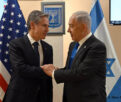 Commentaries
Middle East: Opportunity for the US
Commentaries
Middle East: Opportunity for the US
-
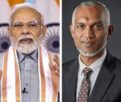 Commentaries
India – Maldives Relations Nosedive
Commentaries
India – Maldives Relations Nosedive
-
AdSense code


















